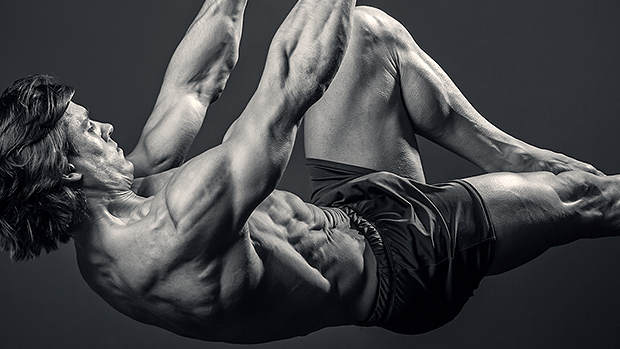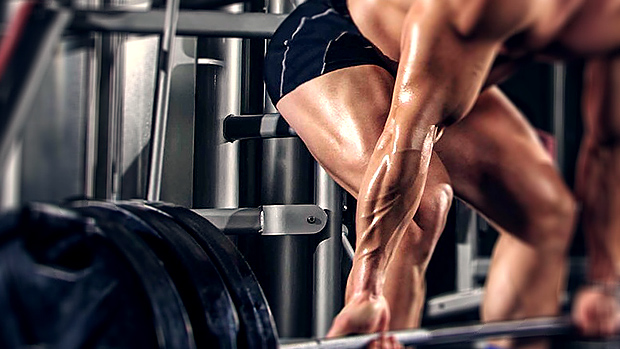If your shoulders are banged up from pressing, it's wise to first treat those soft tissue problems with self-myofascial release. But then what? Answer: Do the handcuff drill.
After releasing the soft tissue of the shoulder girdle that's been hindering movement, the handcuff drill will strengthen and promote blood flow to the muscles of the scapula and humerus, which operate in a supportive function during pressing. The muscles you hit depend on whether you perform the exercise in protraction or retraction, so do both.
Handcuff Drill, Wall
- Start in a full kneeling position close to the wall.
- Wrap a small, taut band over the wrists and place the hands against the wall with the wrists at shoulder height and the elbows locked.
- Now imagine a clock. Make small movements with each hand, alternating them one at a time toward 12, 3, and 5 with your right hand and 12, 9, and 7 with your left hand.
- Progress the exercise by kneeling further from the wall, up to about a foot out from the original position. Then move to standing and progress it the same way. Once you can perform it standing far from the wall, progress to the floor (or on a slightly elevated surface) where you perform the exercise in a straight-arm plank.
Handcuff Drill, Floor
At first your shoulder girdle will quickly fatigue and burn. However, that feeling of fatiguing and burning (the build-up of metabolic waste) isn't the same thing as pain. If it hurts, stop and continue next time, building your way to the point of doing the entire exercise pain-free. You're not ready to move to the next position/progression of this exercise (moving further out from the wall) until you can complete two sets of the handcuff drill pain free, in both retraction and protraction, without taking a break between reps.
Do two sets of ten in each position.





